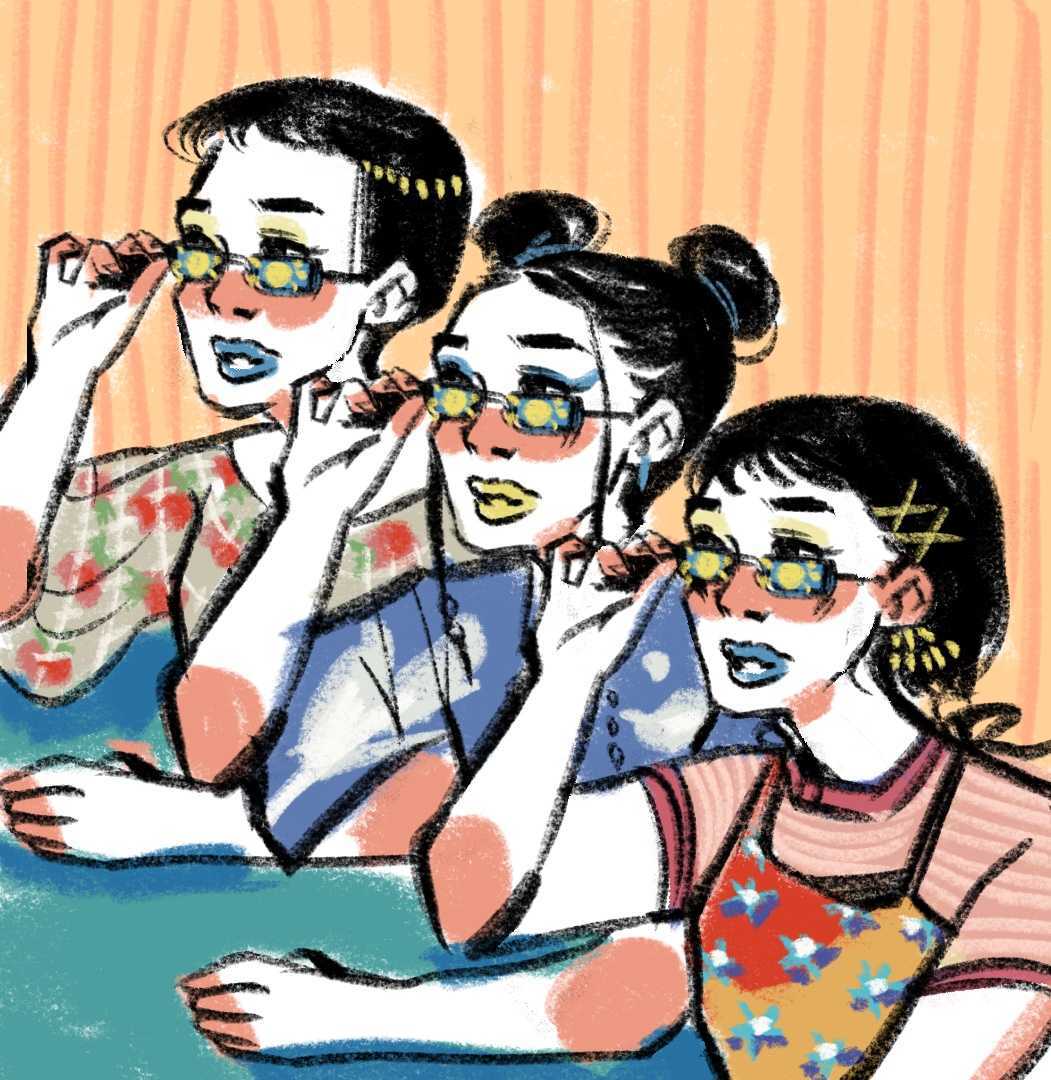Many of the vintage garments that are still around today have more than just careful owners to thank for their longevity.
Their producers — whether that’s one lone seamstress or an assembly line team in a factory— can also be thanked. Even the most mechanized production in the 20th century favored careful construction and sturdy fabrics that are rarely seen today.

For many, the only problem with this high-caliber construction arises in the summertime when temperatures rise.
I’ll admit I’m a chronically sweaty individual. I always seem to feel ten degrees warmer than everyone around me.
Sweat stains can not only be embarrassing and physically uncomfortable, but the chemicals in deodorant can permanently alter the color of a garment even after you’ve washed it.
Even if you aren’t someone who is temperature sensitive, summer is often the time of year when many of us like to let loose and show some skin. Due to changing norms about modesty in clothing, vintage clothing is often much more conservative than what many of us are used to wearing.
If you are on your vintage style journey, summer may make you feel like you’re at a bit of an impasse — but don’t fret.
Like I’ve previously written, vintage doesn’t have to mean stuffy. You can still rock a retro look without sweltering in the heat or feeling constricted.
To crop or not to crop? That is the question.
Now, I’m a bit of a vintage purist. I absolutely cringe when I see someone needlessly alter an authentic vintage garment to suit modern tastes.
That being said, I do understand that the modest styles of bygone eras can be a little bit covered-up for summer.
Upcycling can be a great option for pieces you find in a state of sheer disrepair. If a garment has an absurd amount of staining or tears that would require serious effort to repair, I give you my full consent to give it a new lease on life by cropping or altering it to your liking.
Even if a garment is in tip-top shape, there are ways to temporarily modify it to show a little more skin for summer that won’t damage the integrity of the garment.
With button front blouses, you can leave the last few buttons undone and tie the little tails that remain into a bow. As long as you undo the knot after wearing and steam out any creases, your shirt will be as good as new.
If you want to shorten a vintage skirt or dress, you can hand-sew a temporary hem using a baste stitch. These stitches are meant for short-term use, like in a tailor’s shop, so they will be easy to remove after wearing.
Lay off the layers
If you are someone who likes to wear slips, petticoats or any other vintage undergarment with your vintage pieces, I suggest forgoing some authenticity this summer in exchange for your comfort.
Call me a hypocrite for saying I’m a vintage purist and then encouraging you to bypass tradition, but sometimes you have to bite the bullet to stay comfortable.
Many slips are nylon and trap in heat like no tomorrow. Petticoats can add cumbersome bulk that is not ideal for summer activities.
Still, if you have concerns about how sheer an item is or don’t want your body touching old fabric, a simple cotton tank top or shorts can be a great option.
Cotton is super breathable and perfect for summer. Plus, a plain tank top or shorts can easily be reworn on their own — even if that’s just as pajamas or workout wear.
Not all decades are created equal
Due to changes in trends overtime, certain vintage decades offer more summer-appropriate options than others — and they might not be the decades you expect.
Because the overall trend over the past 100 years has been away from modesty, you might think that earlier decades won’t have styles for a modern summer. However, there are some hidden gems if you look hard enough.
When I look back at images of my grandma in the 1940s and early 1950s, I see some adorable two-piece sets that I could see fast-fashion retailers selling today.
The Sexual Revolution of the 1960s and 70s led to increasingly shorter hemlines — some of which could even be called scandalous by today’s standards.
Another perfect summer pick from the ‘60s is the playsuit trend. There are tons of adorable playsuits on Etsy and Ebay — I might have to purchase one after I finish writing.
Maybe you can’t stop the sweat — but you can stop the stains
Even if you lighten your load, sweat is still inevitable. That’s where something like underarm shields comes in.
Underarm or dress guards were small inserts sold individually or included in the construction of dresses throughout the 20th century.
Today, you can find modern equivalents on Amazon or make your own using vintage patterns.
Whether I’m wearing a vintage dress or a modern top like a baby tee that hugs my armpits, I always wear some form of sweat guard.
My solution for underarm shields is a bit unconventional, though. Instead of spending time and money on conventional shields, I use maxi pads or panty liners. Yes, the things you put in your underwear.
The adhesive backing sticks right onto the armpit area of your shirt, and the absorbent material keeps any stains from peeking through. You can even purchase scented pads if you want to give your deodorant a little boost.
Staying true to your style doesn’t mean you can’t have fun this summer. By taking some extra steps this summer, you will ensure your own comfort in the heat and make sure that your vintage pieces last a lifetime.